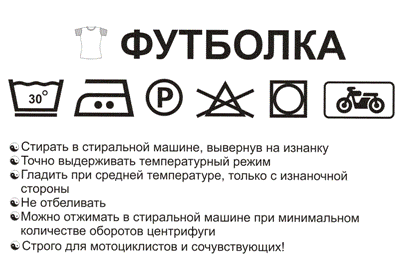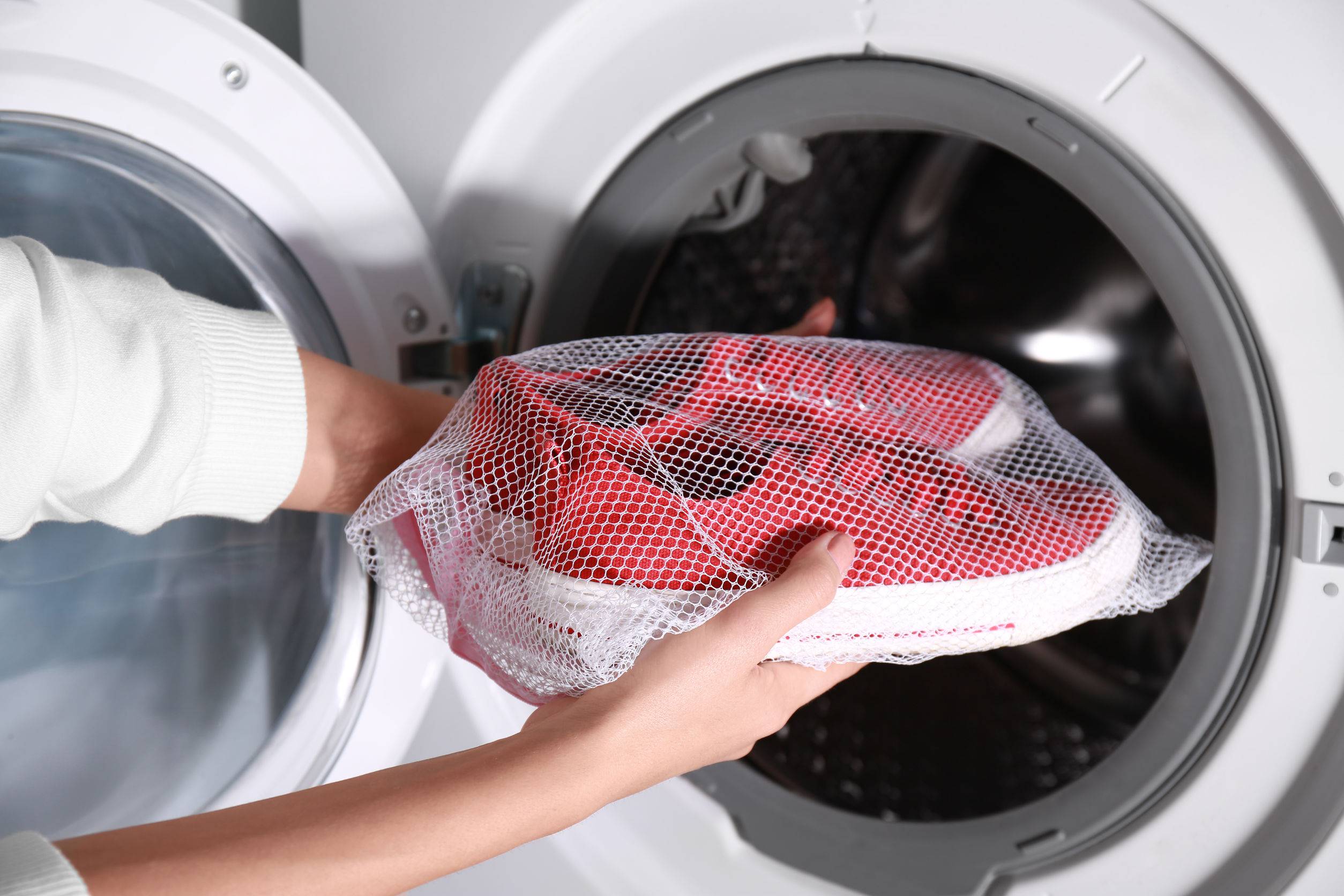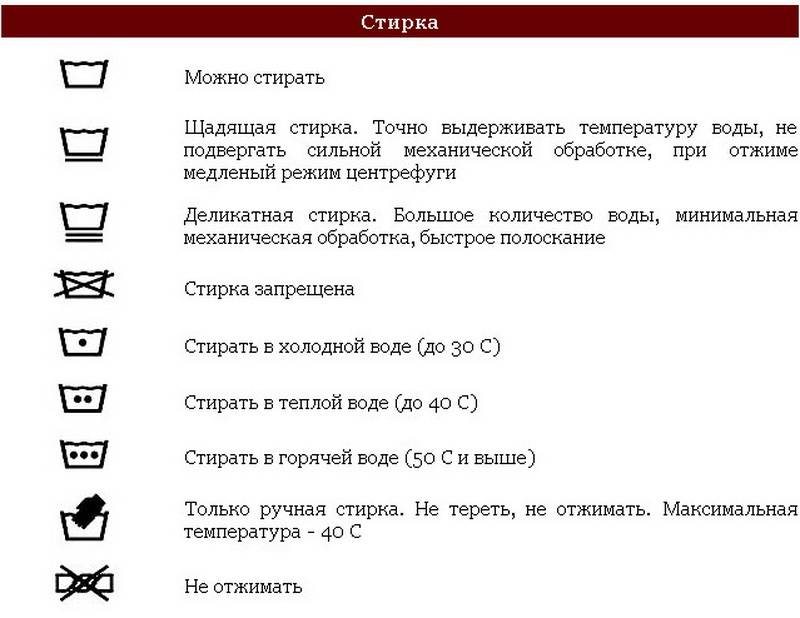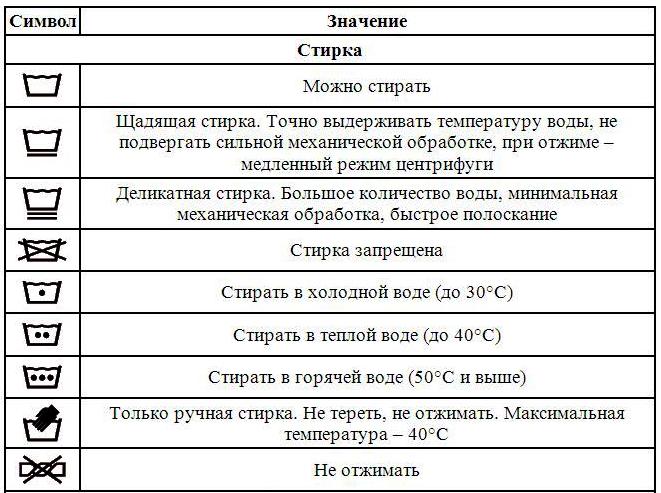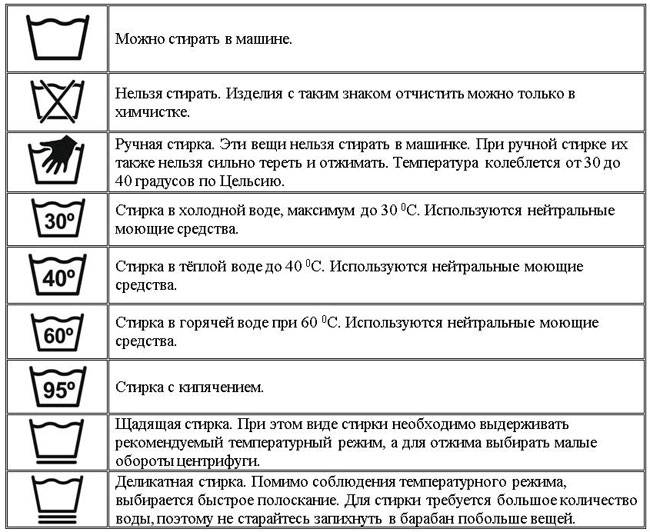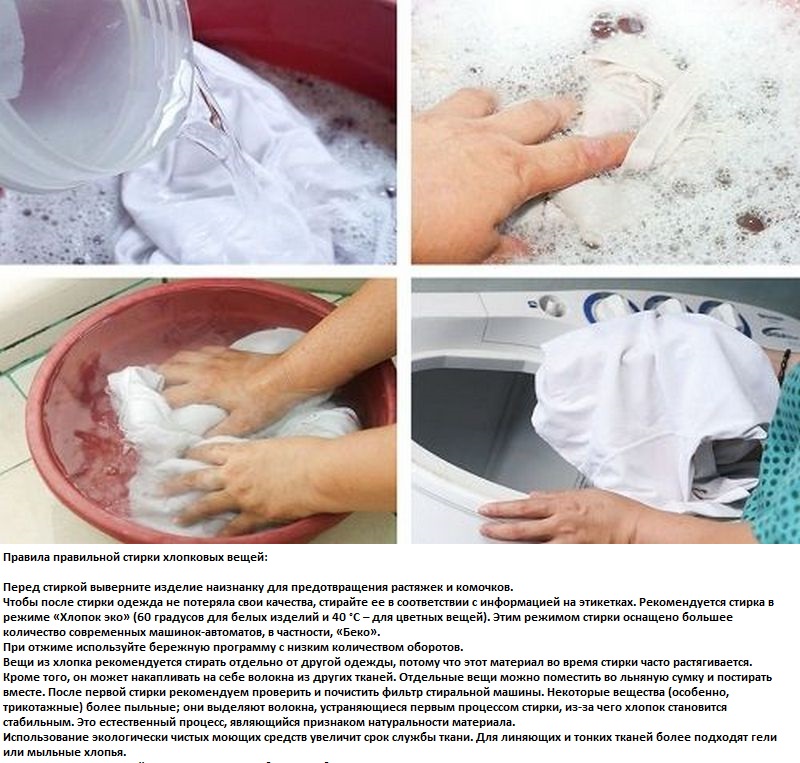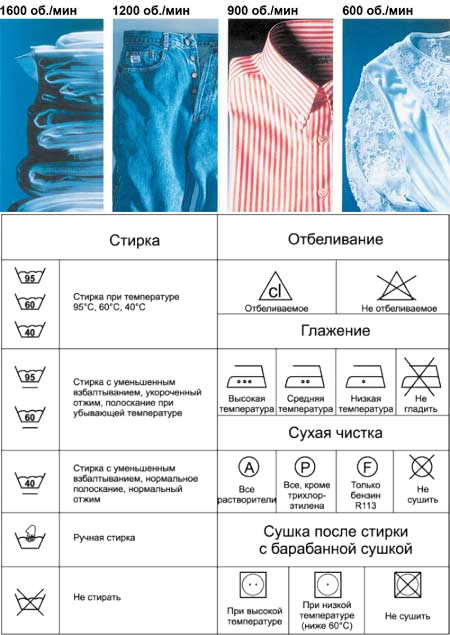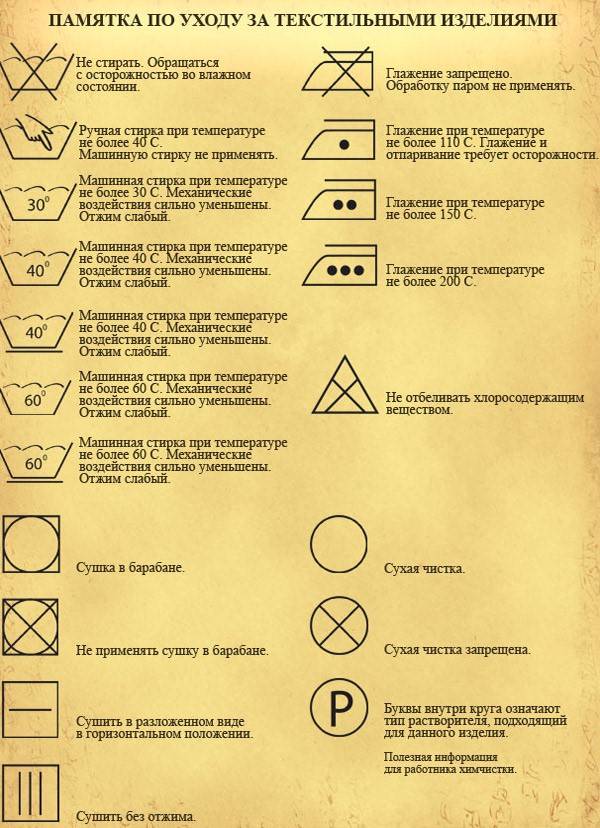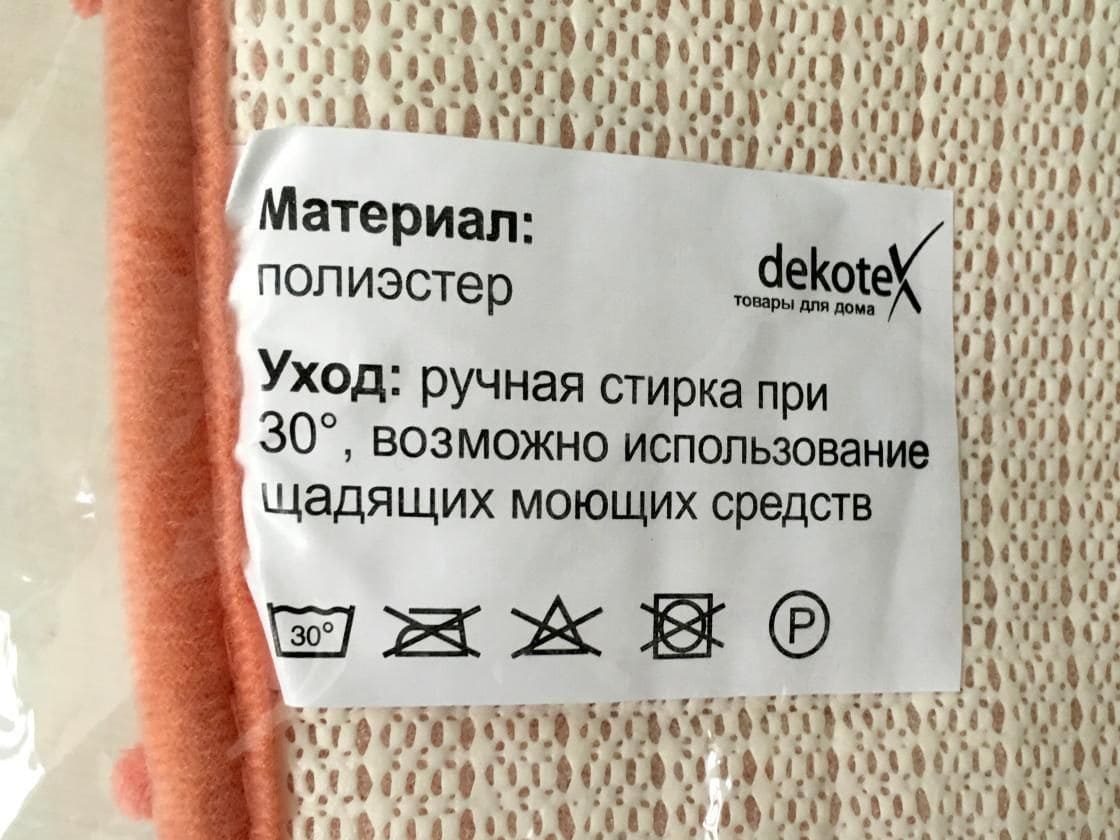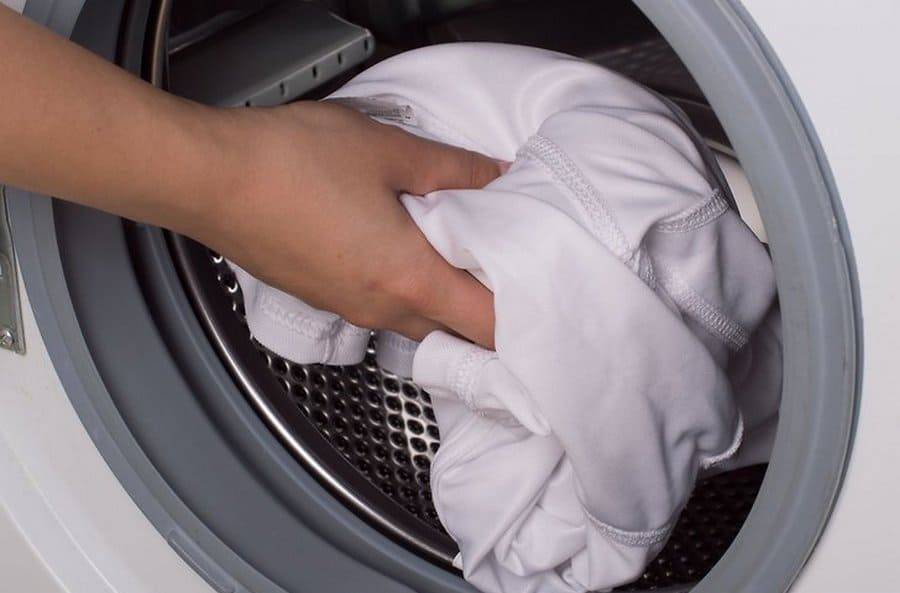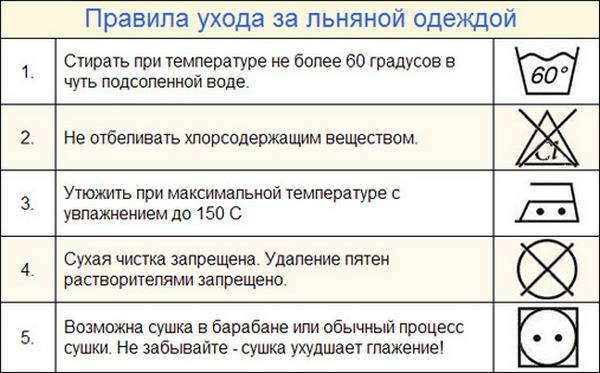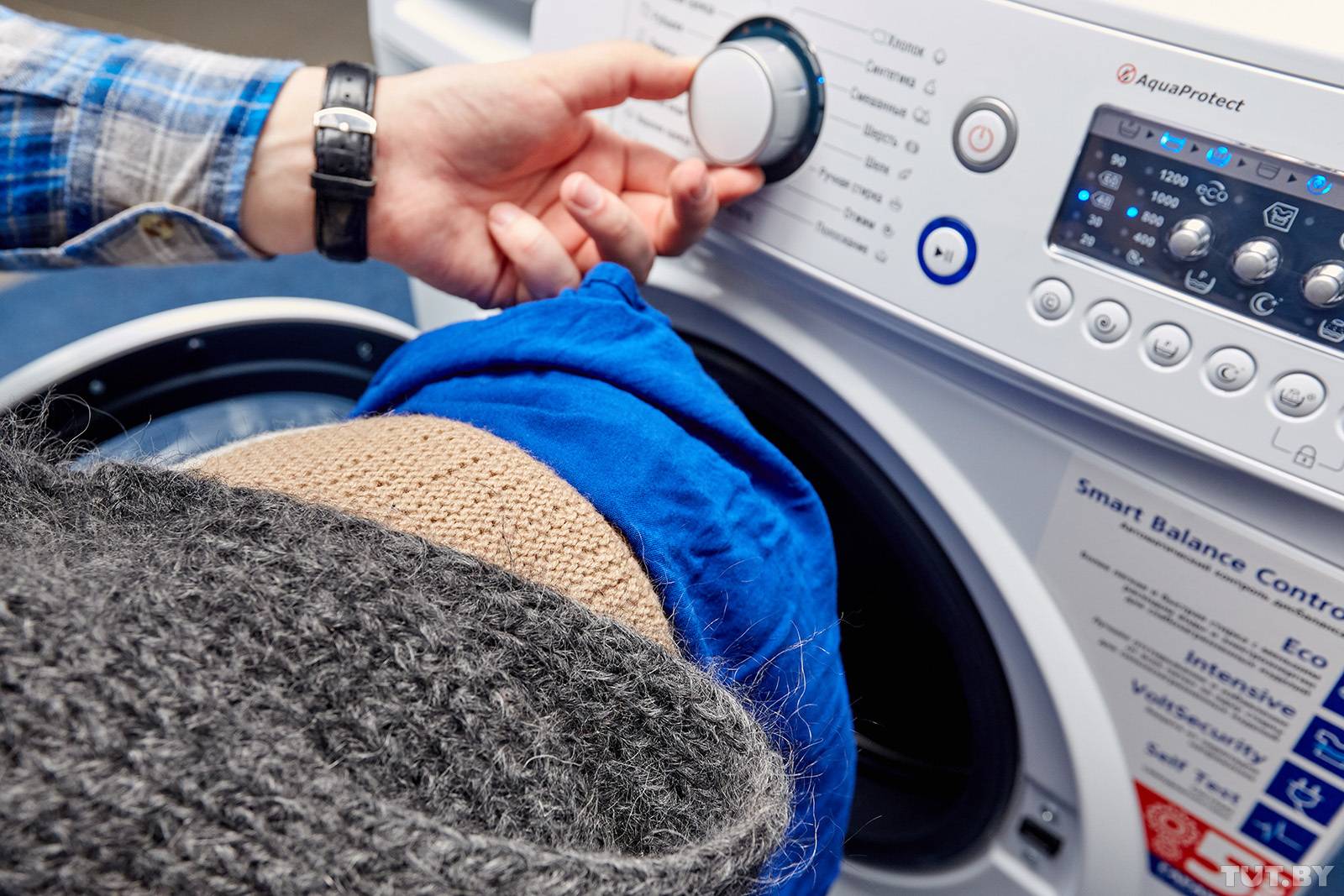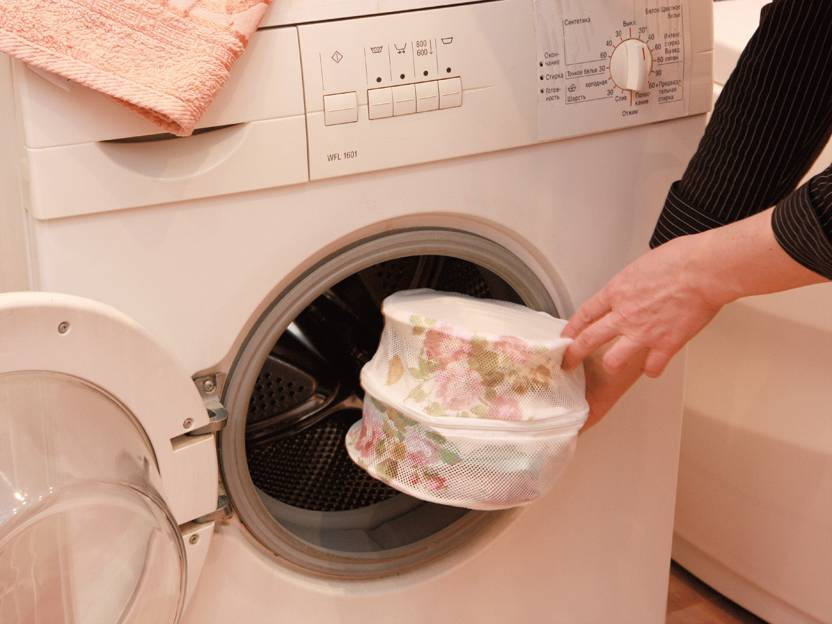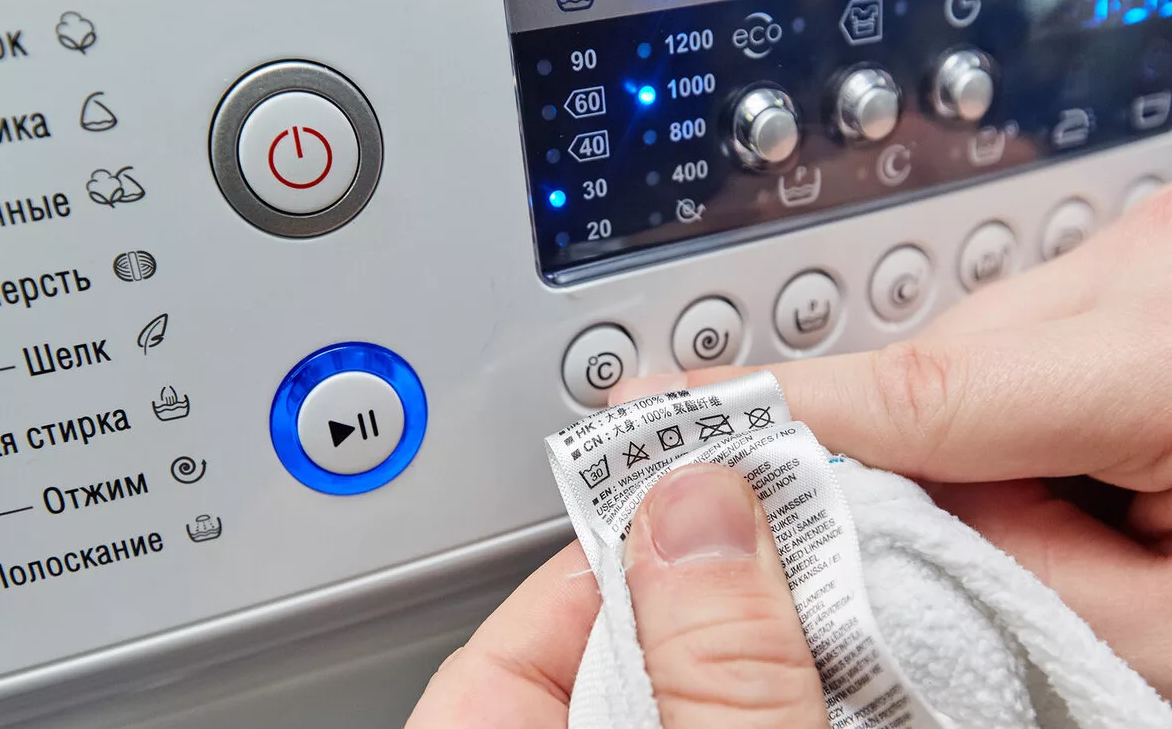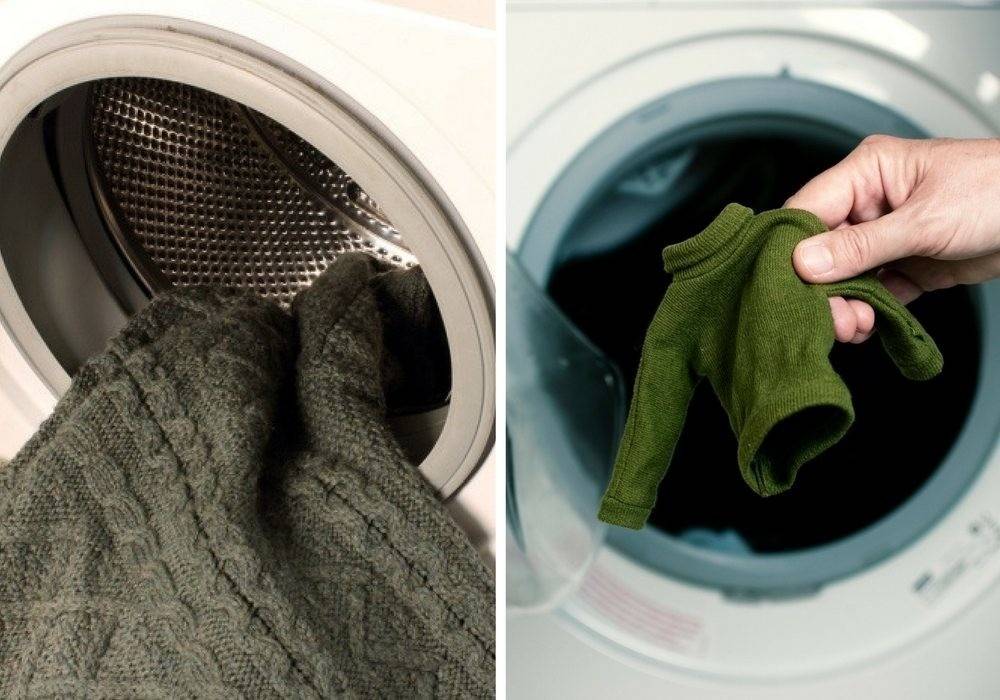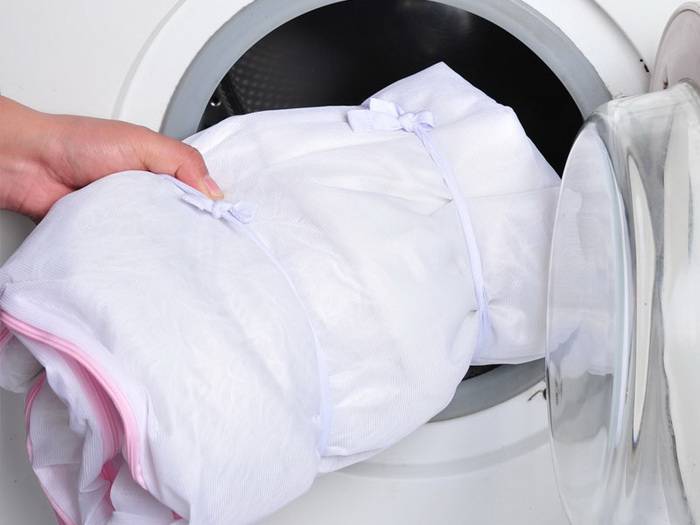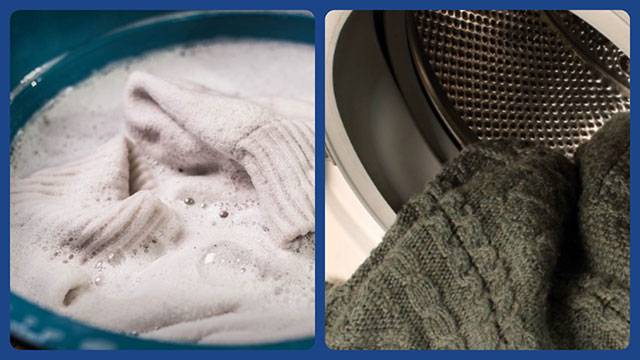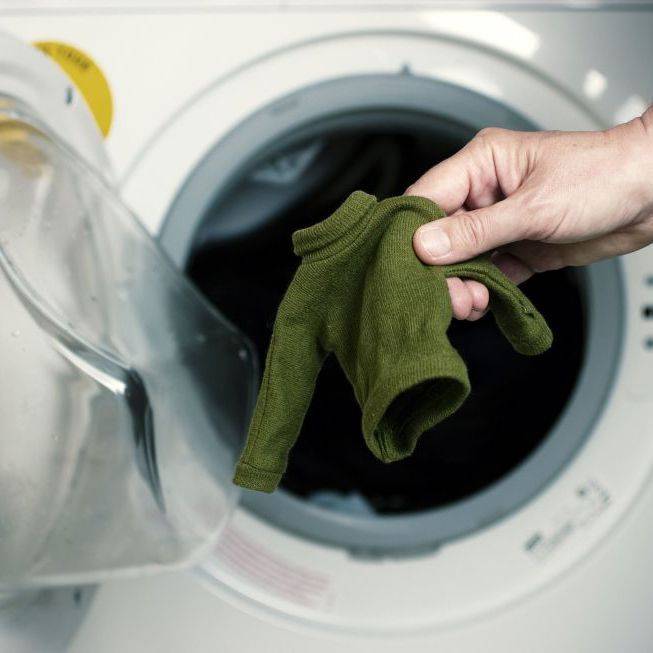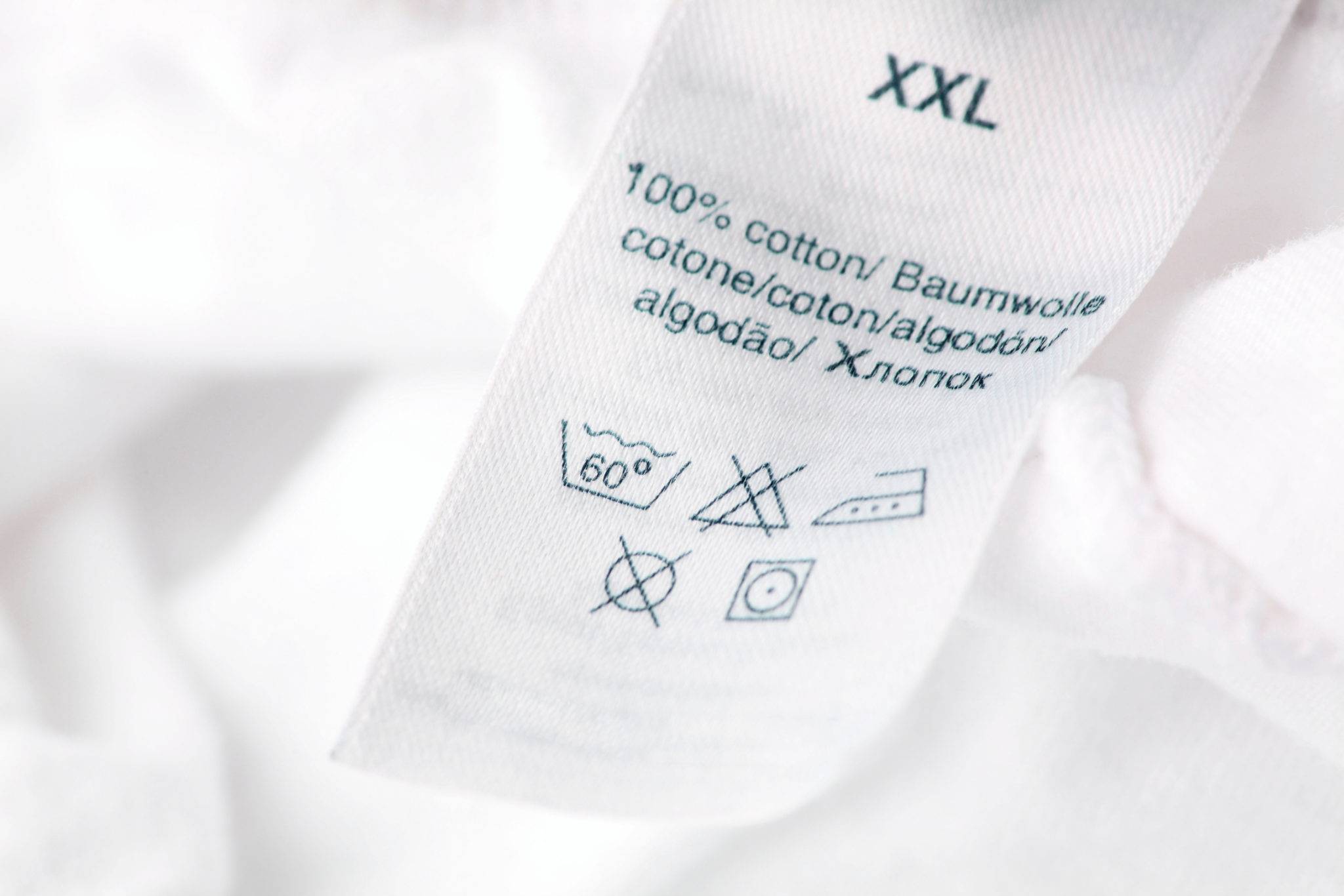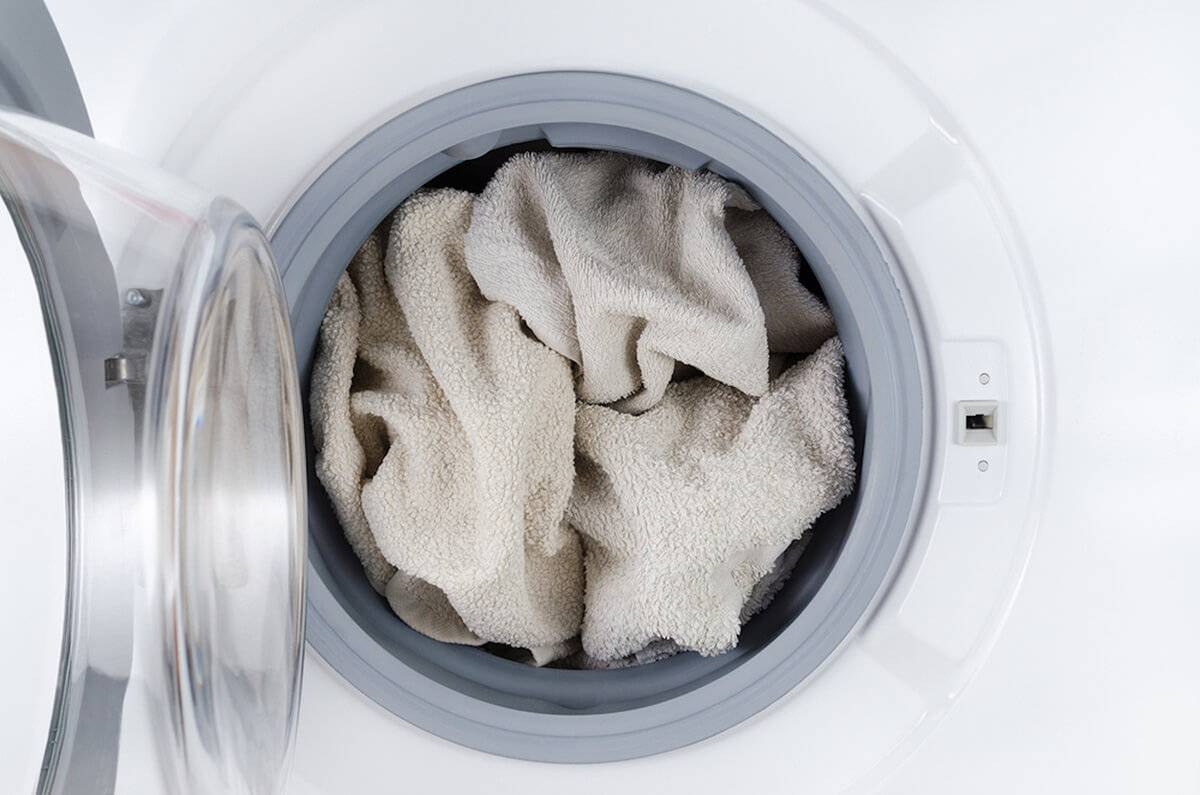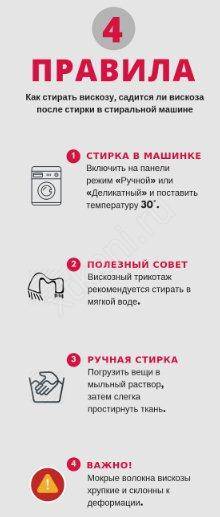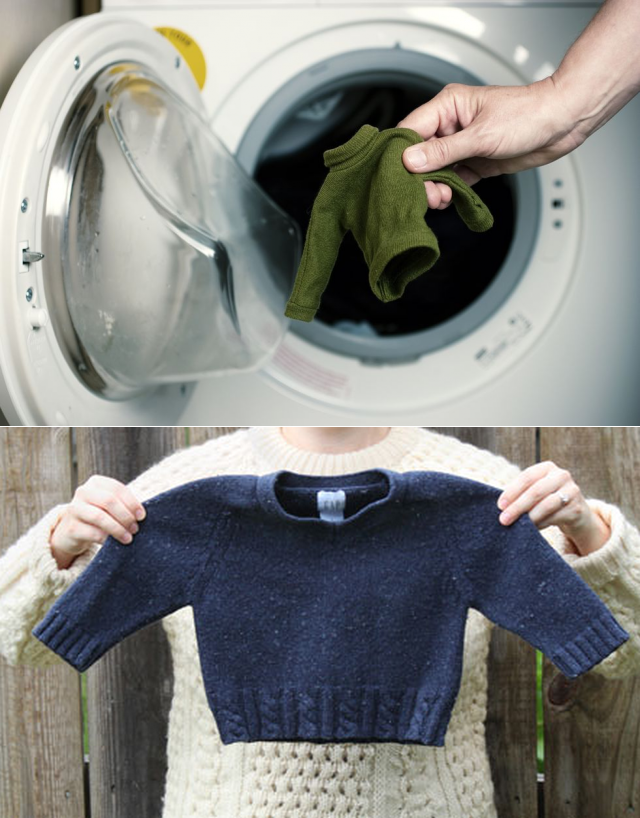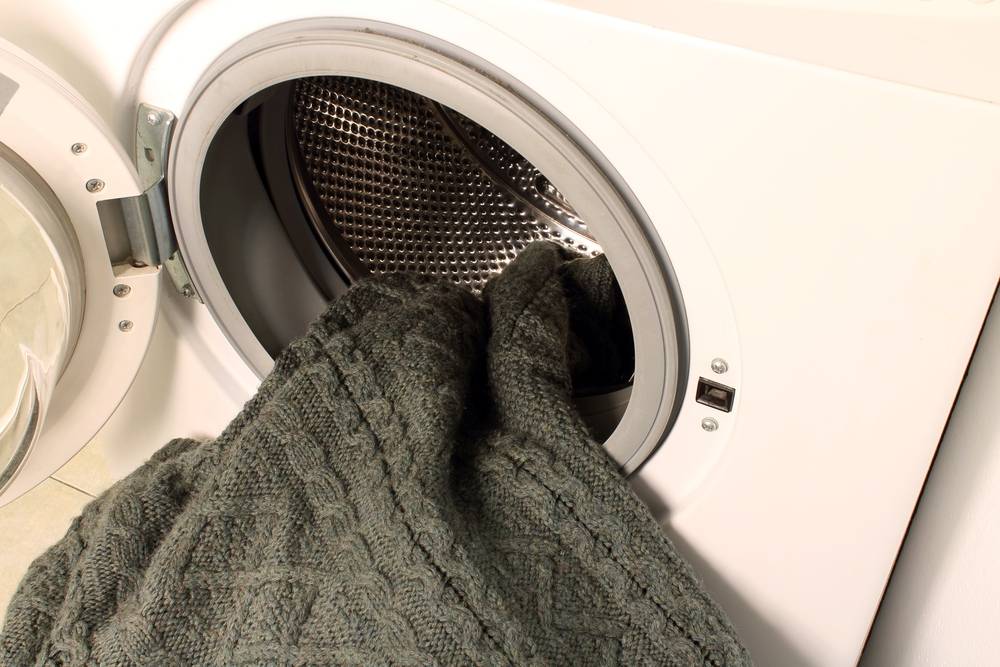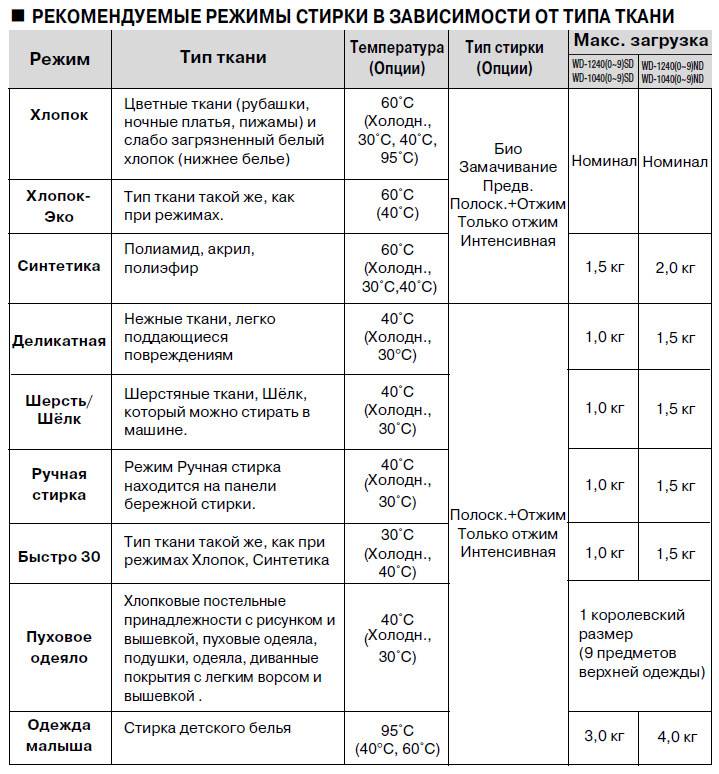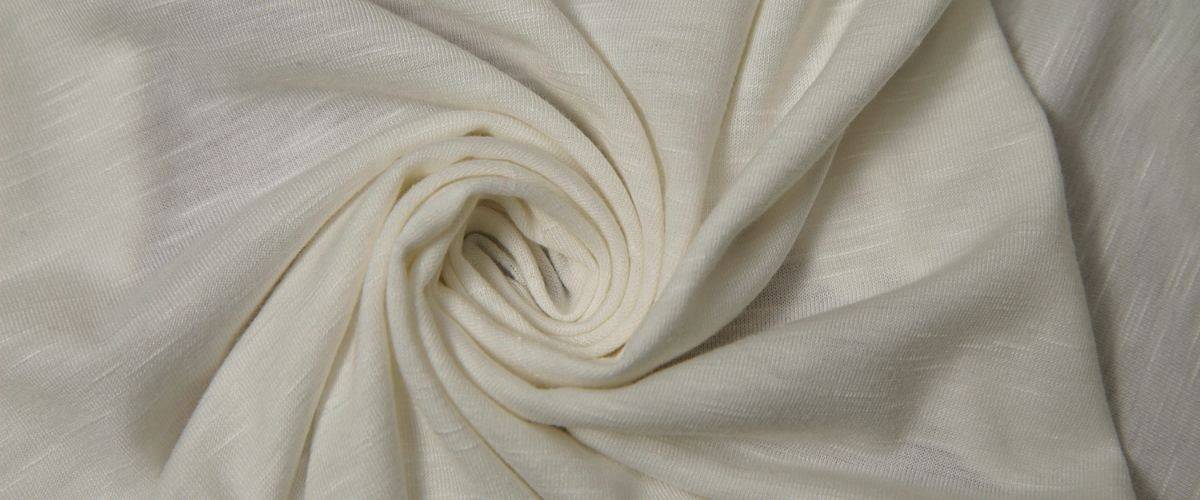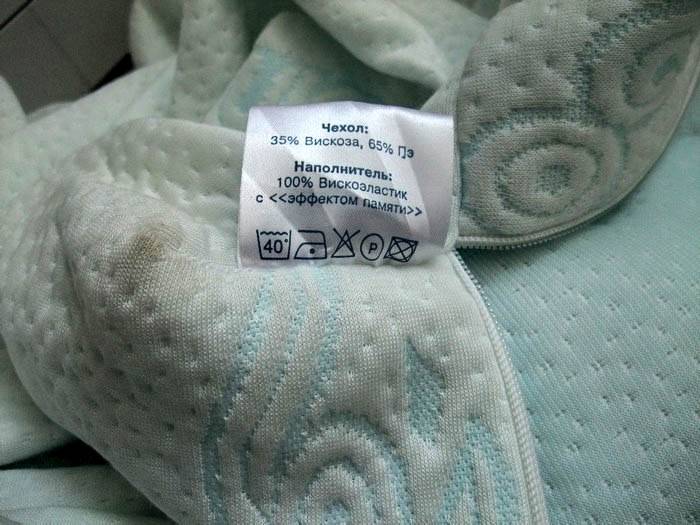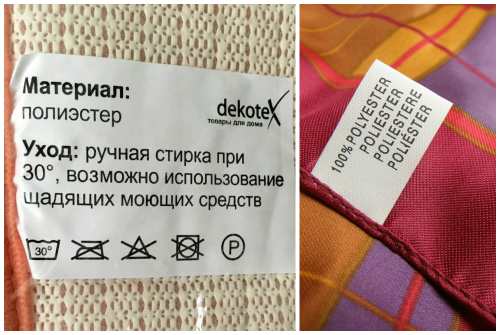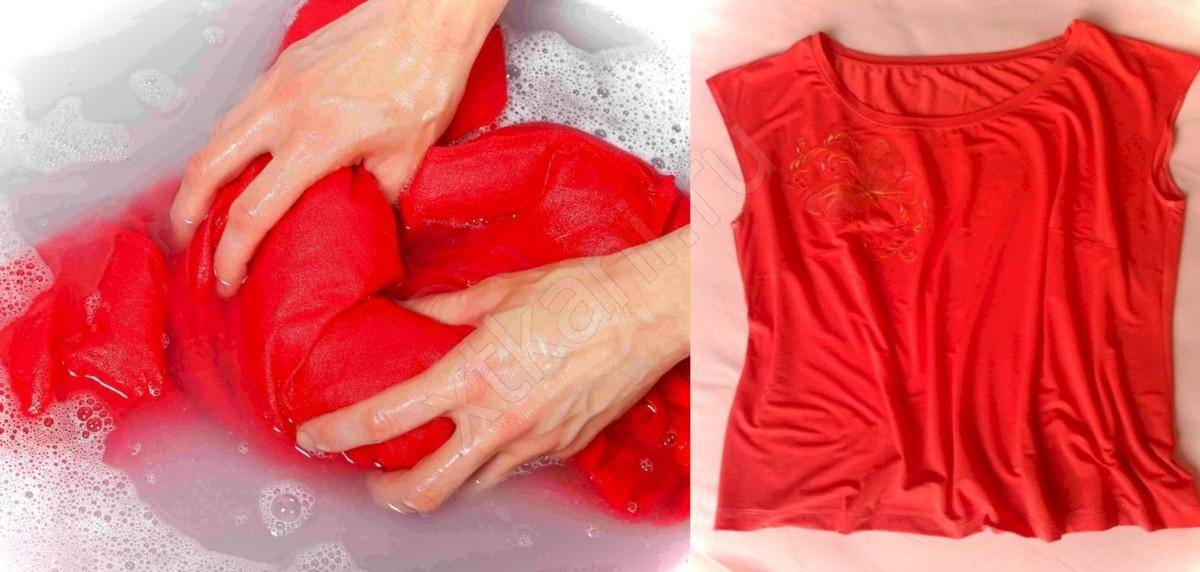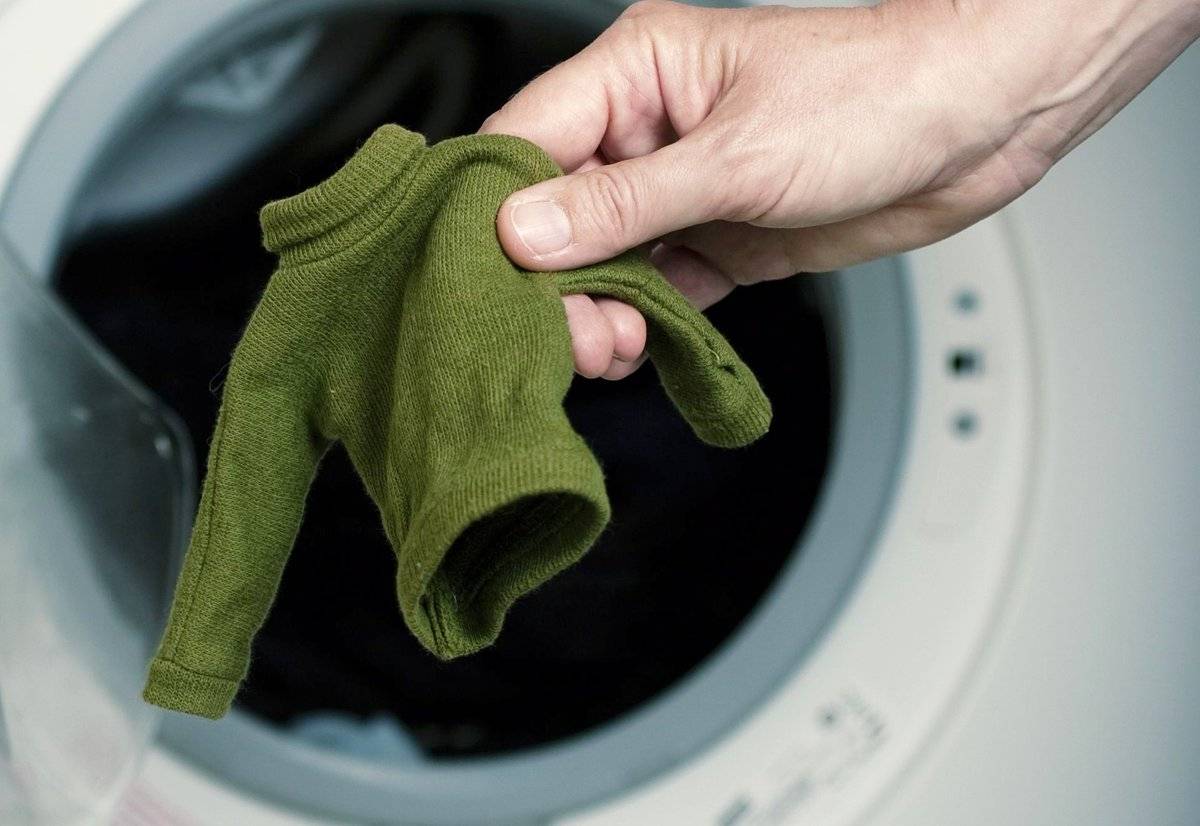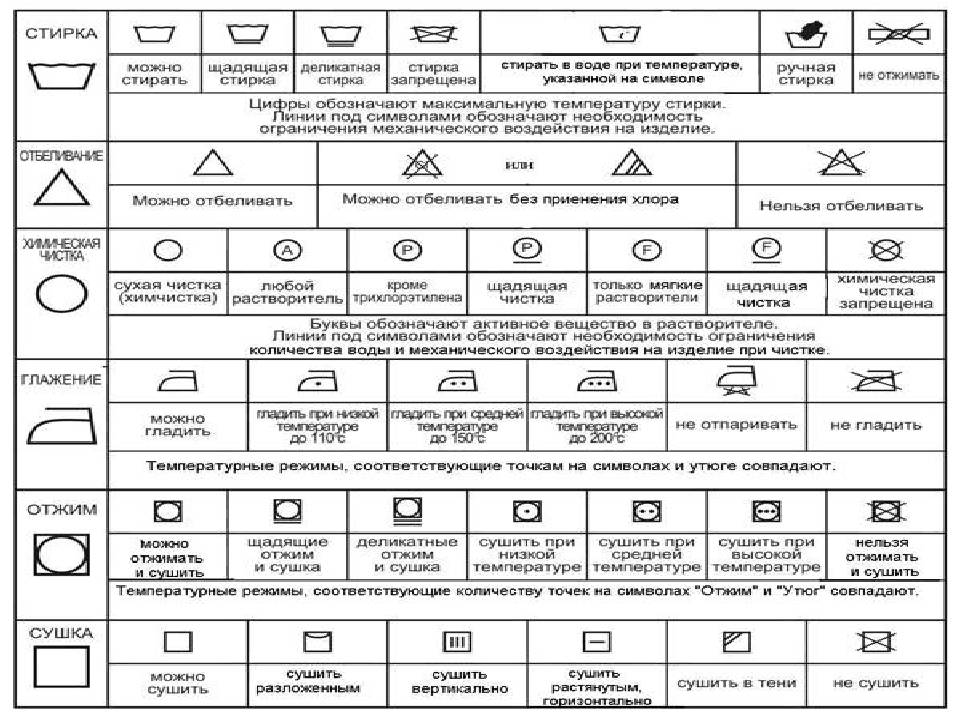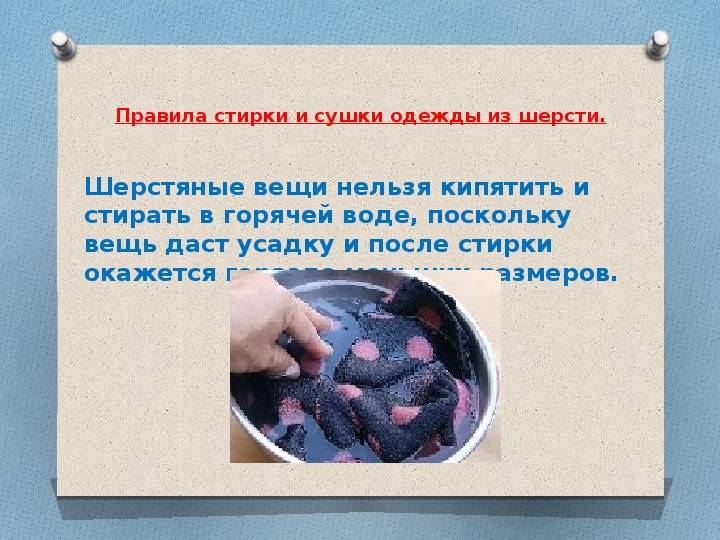Has the thing gone bad?
Before starting the cleaning process for rayon garments, you need to do some preparation so as not to ruin things. To do this, you should:
- Examine the labels. They usually indicate the permitted actions during washing, drying and ironing.
- Disassemble things according to color. Remember that only solid colors can be washed together: white, colored and black separately.
- Pre-clean. If debris, dirt, or plant debris has adhered to the fabric, pick it up by hand.
- View pockets. All items in there must be removed.
- Turn out. This item will protect the outer side of the fabric from excessive mechanical stress, color washout and possible fading.
- Fasten with zippers and buttons. If these trim details are present on things, they need to be connected.
- Prepare a laundry bag. If you have chosen the machine method, this device will definitely come in handy. You can replace it with a regular white pillowcase.
| 100% viscose | Means that the thread is entirely made of cellulose, and does not have any foreign impurities (cotton, linen, etc.) |
| Allows water temperatures up to 40 degrees | |
| Prohibits whitening | |
| Allows ironing at medium temperatures of about 150 degrees. Most often suitable for mixed fabrics | |
| Allows normal dry cleaning. Any dry cleaner has a list of acceptable reagents. | |
| Shows that clothes can be dried vertically |
- Usually viscose is dried on a horizontal surface. Before this, the place is covered with a light towel and the thing is laid, straightening all the folds.
- After partial drying, hanging on a hanger with soft hangers is allowed.
- Ironing is carried out at a temperature of about 140 degrees. It corresponds to the mark “Silk” or “Synthetics”.
- The process must be carried out from the wrong side, otherwise the surface of the iron may leave obvious shiny marks.
- The steaming function is not recommended. Under the influence of hot steam, matter can stretch considerably.
- If necessary, the front side can be ironed through a thin light-colored cloth.
As you can see, if you follow all the recommendations of manufacturers and expert advice, care for viscose will not be difficult. Bright things made of it will serve you for a long time without losing their color and shape.
Viscose has many advantages over other fabrics, but there is one significant disadvantage - when wet, this material loses its strength. It's good if the hostess knew about this even before the purchase, or at least before the first wash. What to do if the item has already deteriorated? We'll have to reanimate, return to its original form.
Why is the viscose deformed:
- the temperature regime of washing or the program is violated;
- the thing was roughly rubbed, squeezed by twisting;
- when drying, ropes and clothespins were used, which led to an uneven stretching of the canvas.
Sometimes the reason for the deformation is in poor quality. If the composition contains cotton, linen or artificial fibers, the thing may behave unpredictably. The ideal additive to viscose is elastane. Only 5-7% will make the material resistant to deformation.
For some reason, many are worried about whether the viscose shrinks. In fact, it can stretch out. This is especially the case when using knitted viscose yarn. Knitted fabric increases in length after washing, when worn.
How can you reanimate a stretched thing:
- Wash in hot water. But do not immediately throw it into boiling water. First, at 50 degrees, dry, check. Then (if necessary) at 60, 70. At the same time, make sure that the fabric does not fade. You can drip some vinegar.
- Cut off excess. Sometimes it is easier to remove the length of a skirt or blouse than to "conjure" temperatures, wash and dry repeatedly.
- Most often, it is not possible to assemble the thing back, the stretched canvas does not shrink. Therefore, the way out is to reshape the model yourself or take it to a professional seamstress.
If the thing has sat down
How to stretch rayon:
- Sprinkle the item with water, stretch and iron with an iron. Work with the wrong side. It is advisable to apply a measuring tape, check the size.
- Pour warm water into a basin, immerse, soak well. You can leave it on for a while so that the fibers are well saturated. Then squeeze lightly, place on a white terrycloth towel, stretch in the desired directions. You can fix the edges with pins until dry.
How to dry and iron properly?
When the pants are washed, they should be hung over the bathtub. You should not place them near heating devices, this will make them sit down. After drying, the trousers are placed on a drying board, folded in the direction of the arrow. They must be ironed with an iron. The arrows need to be made even on both legs.
> For drying, in order to prevent creases, it is better to use a special hanger for the belt. Hang dry pants on a hanger.
For information on ironing modes, read the label. The front part is ironed with gauze or cotton fabric. To make the arrows, the trousers are sprayed with a little water and then ironed.
Washing trousers is not as difficult as it might seem. You just need to do this work, taking into account all the above nuances, and then the result will surely please.
Share link:
Ð
Heart, heart, heart, heart, heart, heart Bang, bang, bang, bang, bang:
- Burgundy, burgundy, burgundy Lilac, lily, lamb, lamb, 1-2 lamb;
8. In the middle. A few minutes later.
-
- Rose, Rose, Rose, Rose, Rose, Rose, Rose, Rose, Rose, Rose, Rose, Rose, Heart (9%);

9. Burgundy, burgundy, burgundy L · l ° lµÑÑÑ. Rose - Red Rose.
- Burgundy burgundy birch bark Rose, Rose, Rose, Rose, Rose, Rose , ± ÑÑÑÑ. Take a break;
- Saucer, saucer, saucer, saucer Bumpy bump. Donut, donut, popcorn ;
- Burgundy, bastard , ±. Bridging, bridging;
- Bark, bark, bump, bump Quick and dirty.
Bumpy flare.
10. Saucer, saucer, saucer, sardine РРееÐ. Flush, flare, flare. DOWNLOAD DOWNLOAD
Flap, flare.Bumpy bump? Good morning, good morning! Soon and so on. Burgundy, birch, birch, bark, bark, bark Loc, lokl li l ± li lul.
Drying and ironing
To preserve the "presentation" of the viscose product, forget about the tumble dryer. Do not hang things on radiators or warm water coils. The ideal option for drying viscose is a horizontal surface. Lay on a thick terry towel, and on top lay out a wet, lightly wrung product and smooth out any noticeable bruises with your hands. To remove excess moisture, spread another towel on top and press it against the item with your palms.
You can iron viscose only from the wrong side. This will prevent spoiling the appearance. Set the iron to the lowest temperature setting. It is advisable to use gauze when ironing. If wrinkles remain on the fabric, sprinkle with water. Do not use the steaming function.
If you follow all the rules, the process of washing and ironing delicate items will become an easy task for you. Treat your clothes with care!
What to do if the viscose shrinks or stretches after washing
After washing, the viscose can lose its shape for the following reasons:
- the automatic mode is incorrectly selected (too high temperature, intensive spinning);
- the fiber was subjected to a strong temperature drop (washed in warm water, rinsed under ice cold water);
- hand wash errors (friction, twisting);
- drying next to heaters or a radiator.
Alas, in most cases it is impossible to save a stretched viscose thing, since the fiber quickly takes on a new shape and can no longer "shrink" back. The only option that gives no guarantees is to immediately soak the clothes in very cold water for 15 minutes, and then spread them out (do not hang them!) To dry.
If the viscose shrinks after washing, gently iron the garment at the lowest possible temperature, gently stretching the fabric in the desired direction.
HOW EASY TO WASH AND DRY KNITTING || LIFEHACK
Article author: Nina Mitchenko
a housewife with more than 10 years of experience, she sees her mission on the site in the transfer of experience
Your mark:
Preparing for washing
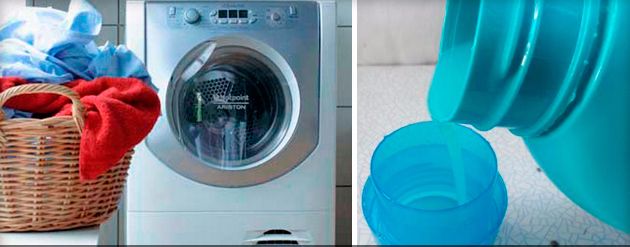
The special ribbed corduroy structure and hairiness give it the ability to collect and accumulate dust particles and small debris, so the fabric needs periodic cleaning.
The material also does not like water. After contact with her, he sits down and deforms. Therefore, dry cleaning and care should be preferred to wet exposure.
Preparation begins with removing specks, pile, scraps of thread and hair from the trousers, which are typed on the fabric. The thing is shaken several times. You can use a carpet beater.
Then it is carefully processed with a lint brush or a roller made of sticky material.
Stubborn dirt and stains must be removed before washing. The affected area is soaked in warm soapy water from shavings of laundry soap. You can dilute the powder with a stain remover for delicate fabrics. For exposure, 20-30 minutes is enough. Then wash with detergent.
To remove stains and stubborn dirt, ammonia is used.
Re-soaking in clean water with the addition of 3-4 drops of ammonia per 5 liters will help restore attractiveness. cool liquid. The procedure lasts no more than 15 minutes.
Corrects the situation with faded areas and stubborn stains with a dye for a fabric of a suitable shade
When choosing, it is also important to take into account the composition of the fabric. The procedure will have to be repeated periodically to freshen up the paint.
During operation, contamination cannot be avoided and things must be periodically refreshed.So, how to wash corduroy trousers without sad consequences. There are two options.
How to iron viscose fabric

Viscose wrinkles enough, but it is easy to iron. To iron the washed viscose clothing without consequences, you must follow the following recommendations:
- Before the procedure, you will definitely need to turn the thing inside out.
- The ironing temperature should be kept to a minimum.
- If there are severely wrinkled areas, it is allowed to iron them through a slightly damp clean cloth.
As you can see from the article, no special efforts are required to wash viscose. After studying the tips that are described in this article, even a young inexperienced housewife can easily cope with this task.
Automation
To prevent the viscose from shrinking after the first wash, certain rules must be followed.
Before performing the procedure, you will need to examine the clothing label, since a combination of different fibers is often used, and this may change the conditions for caring for things.
Do not rely on your own opinion. Follow the manufacturer's recommendations.
How to wash viscose in a washing machine correctly:
- Delicate material requires setting the appropriate mode. You can wash the fabric with the installation of such programs: delicate or hand.
- At what temperature? The water temperature is 30 degrees.
- Dress, sweaters or other items must not be wrung out in the washing machine. The fabric may shrink.
- This material must not be tumbled dry. May stretch or shrink, again depends on the composition indicated on the label.
- Pour liquid concentrate into the powder compartment.
- You can use fabric softeners.
- Bleach can be added to the appropriate tray; it must be free of chlorine and alkali. Oxygen bleach is recommended for viscose. For example, Vanish.
It is better to place the item in a special bag before washing. This will reduce the mechanical stress on the tissue. In addition, this way you can save on water and electricity by placing things in the machine that need to be washed on a delicate cycle at 30 degrees.
Manually
Cleaning clothes made from such material is a demanding task. Not a single mistake can be made, otherwise the result will be disastrous.
If you are not limited by the time frame, then it is better to wash your viscose clothes by hand. In order for the procedure to give the desired result, strictly follow the algorithm of actions, do not abuse detergents and bleach.
How to wash viscose by hand:
- Before carrying out the manipulation, check the pockets for any change, keys or paper bills.
- Take a clothes brush and gently brush off any dust and visible dirt.
- Fill a container (bath, basin, bucket) with a sufficient amount of water, depending on the volume of the item to be cleaned.
- Dissolve the liquid detergent in water. The powder is poorly rinsed out by hand.
- Soak the product for 30-60 minutes, depending on the degree of soiling. And it is better not to bring things to such a state when serious cleaning is already necessary. Put on several times and wash immediately. This will make the product last longer.
- Washing follows after soaking. Gently remove visible dirt, scrub other areas of dust. Do not expose the item to strong mechanical stress. Try to rub the fabric to a minimum. Clench the material into a fist, and unclench.
- Rinse the clothes after washing. Do not expose the item to the tap as the fabric stretches faster. Pour water into a basin and rinse. Change the water several times. It is advisable until the soap ceases to stand out.
To squeeze out the moisture, turn the basin upside down and lean on the bathtub so that it is slightly tilted (or use a washboard). If there is rust on the basin, it must not be used.
Place the item on the product and leave it in this position for a while. The water should drain off on its own. Send the item to dry after 15 minutes.
Shrinkage reasons
Does viscose shrink? An urgent question that the owners of products made from a similar fabric ask themselves in order to find out how to wash in a machine or by hand.
Always check the composition of the item before carrying out any cleaning manipulations. As a result of improper processing, many products stretch or, conversely, can shrink, and it is almost impossible to return to its previous appearance.
Viscose shrinks when washed in the following cases:
- The fabric contained cotton, and the clothes were washed in hot water.
- If the label mentions polyester, be careful. Improper washing will cause the item to shrink.
Does viscose shrink when washing?
Only those clothes that are made of 100% viscose are subject to stretching. A thing with the addition of another fabric, on the contrary, will shrink.
Therefore, be sure to pay attention to the composition of the thing.
It is important. Since the care of viscose and how to wash things depends on it
Since the care of viscose and how to wash things depends on this.
Many housewives ask the question of how to wash viscose so that it does not shrink? It all depends on the fulfillment of the manufacturer's requirements and recommendations. There are several reasons for possible shrinkage:
- sudden temperature changes during washing and rinsing;
- drying in a washing machine or near heating appliances;
- spinning machine at high speeds;
- unsuitable detergents, for example with alkali;
- using hot water for washing;
- drying on a battery;
- using steaming while ironing.
One hundred percent viscose - textiles are not at all as "hopeless" as, for example, synthetics. Rather, the opposite is true. Some of its remarkable characteristics include:
- pleasant tactile sensations;
- high hygroscopicity (the ability to absorb moisture from the human body);
- perspiration resistance;
- good aeration (viscose allows air to pass through, allowing the body to breathe);
- pure viscose is not electrified;
- it is a very light and durable (dry) material;
- the smooth surface contributes to the low dirtiness of the fabric.
- Low-grade fabric with the addition of cotton or polyester will shrink for sure, and the latter will also "reward" the product with pellets.
- With an admixture of wool, which itself loves to shrink after washing, a thing can easily lose several sizes.
- Too hot water causes not only shrinkage, but also deformation (clothes can stretch, twist, lose their shape).
- Drying on heating devices, an electric dryer, batteries is also a sure way to spoil the shape and size of a viscose product.
- The use of spinning for hand or machine washing, steaming during ironing can, on the contrary, stretch viscose clothes, and this most often cannot be fixed.
Therefore, in order to maximally preserve the shape and size of viscose products, it is important to know exactly the full fibrous composition of the fabric and take care of things accordingly.
How to hand wash at home
Before you start washing, you need to familiarize yourself with how to hand wash stained clothing.
Water temperature
Before you start washing clothes, you need to familiarize yourself with the optimal temperature of the water. Experts do not advise using liquid that is too hot, since silk does not tolerate high temperature readings. Therefore, the water must be heated up to only 30-40 degrees. If you heat it 10-20 degrees more, the material will begin to tear.
Choice of funds
There are several effective remedies that can help remove stains from silk items.
Silk detergent
Previously, only laundry soap was used for hand washing silk clothes, but now special products are produced for working with such material.
Use liquid detergents instead of powders, which are only suitable for heavy and rough fabrics. Liquid gels dissolve better in water and do not attack the silk material aggressively.At the same time, it is better to use the tools that are released by the most famous manufacturers.
Detergent-gel for baby clothes
If you need to wash your child's clothes, you will have to use a gel for washing children's clothes. These products contain ingredients that will help cleanse silk from dirty stains. Effective formulations include:
- "Eared nanny". Universal gel used for washing items from any fabric.
- Tortilla. It is used for cleaning clothes made of colored fabrics.
Borax solution for white fabric
White silk items are the most difficult to wash, as not all detergents can clean them. Experts recommend using sodium tetraborate. Its advantages include the fact that it does not damage the fabric and cleans it of dirt and absorbed greasy stains. To prepare a solution, add a tablespoon of the substance to a liter container of water.
Washing process
To prevent silk from shrinking after washing, you need to familiarize yourself with the features of cleaning it from dirt.
To begin with, dirty things are soaked in warm water for 5-7 minutes, after which a detergent composition is added to it. In this case, the water temperature should not exceed 35 degrees. You need to wash things carefully so as not to spoil them. It is contraindicated to use force, as this can accidentally tear the fabric.
Rinsing
After the end of washing, they are engaged in rinsing the washed silk items. Some people think that they should be rinsed in cold water, but this is not the case. Rinsing should be carried out in a liquid heated to 25-30 degrees. Some people add 40-50 milliliters of vinegar or an antistatic softener to a container of water while rinsing. This is done in order to better clean the fabric of dirt residues.
Silk must be wrung out carefully so as not to accidentally tear it. Do not twist it by hand or squeeze it out with a centrifuge.
Instead, place the washed item on a flat surface and gently press down on it with the palm of your hand.
How to iron viscose fabric
In conclusion, we will give general rules so that you finally understand how to wash viscose so that it does not shrink, stretch and somehow lose its shape:
- Viscose fabric, which contains acrylic or wool, should be washed only in cold water, otherwise the thing will inevitably shrink by 1-2 sizes;
Rule # 8. Viscose clothes should not be worn wet - they will stretch out. For the same reason, they are not dried with vertical steamers.
-
- If you want to freshen up the color of the dress, add a teaspoon of vinegar (9%) to the rinse water;
- The polyester in the viscose fabric makes it smooth and shiny. However, the slightest defects are strongly visible on it, for example, puffs, spots, pellets quickly appear. Such things need to be washed by hand or in an automatic machine in a case;
- Wool adds softness to the fabric, it is pleasant to wear on the body, however, due to improper washing, pills can appear on it. Before the procedure, clean the thing with a sticky roller, remove lint, top dust;
- The addition of elastane allows the fabric to stretch well, but as a result of improper washing and drying, the thing can hopelessly lose its shape. Eliminate coarse pressing and vertical drying;
- Thanks to the cotton in the composition, the viscose wrinkles a lot, but smoothes well. Such fabric is considered hypoallergenic.
Read on to find out how to remove the gum from your trousers.
Rule # 10. As a rule, viscose fabric does not shed, but burns out under the influence of sunlight. Moreover, it burns out ugly - with spots. Dry your clothes in a ventilated area with diffused sunlight.
You need to take good care of viscose so that you don't have to buy a new dress every time.
Therefore, special attention should be paid to drying and ironing. Drying:
Drying:
- It is carried out in a horizontal position. Place the garment on a terrycloth towel. Squeeze out excess moisture.Change to a dry towel and leave to dry. Flip clothing periodically.
- Can be hung on a hanger. Only you need to use a wooden product. Metal hangers can leave rust on clothing.
- The fabric wears out faster when exposed to ultraviolet light.
Steaming will have a negative effect on the material. It is not advisable to use this function.
- Place the washed items on wooden or plastic hangers so that the glass can be filled with water. You should not take metal ones - traces of them remain.
- You can unfold and flatten the product on a plane, so it will definitely not deform.
- A towel or folded sheet can help remove excess moisture. The blouse is placed on a towel and folded into a roll with gentle pressure. Thus, it will be possible to avoid deformation.
- A hot tumble dryer and washer dryer cannot be used. As well as drying wet clothes on batteries or active sun. Exposure to high temperature viscose causes deformation and shrinkage.
- To dry, garments with a high viscose fiber content should be smoothed by hand on a flat surface.
Ironing any wardrobe item or home textiles made of natural cellulose should be according to the following recommendations.
- The operation should be carried out exclusively from the seamy side.
- Turn on the iron at low heat.
- Iron the elements and decor on the front side through cheesecloth.
- Do not use a steamer and local humidification from a spray bottle. Hot steam makes clothes stretch.
- If moisture is needed, use damp gauze and iron through it.
How to machine wash tulle: rules and recommendations
The basic requirements that you need to know in order to properly wash the tulle include the paramount parameters: the correct temperature (depending on the material), the composition of the cleaning agent (it must be gentle, since a powerful bleach can damage the structure of the delicate tulle). To get the most out of the unsurpassed whiteness, you will need to include some cleaning aids in your wash. Also, you need to find out if machine washing is allowed for your specific curtains, or if you need to use only hand wash.
Information on the recommended washing mode can be seen on the curtain label in the form of symbols
Each symbol indicates a particular mode of washing, ironing or drying the fabric.
After washing, there are a number of subsequent activities, which include drying, steaming with an iron. These requirements are usually set by the manufacturer himself, and include them in the recommendations / instructions that come with the product. However, if you do not have this (especially if the curtains are not factory-made), then you will need to wash according to the general rules.
General recommendations for washing in an automatic machine
If your curtains are not factory-made, but of your own tailoring, or there are simply no recommendations attached to them, the procedure below will be very useful for you. We will consider the rules in relation to specific types of materials, and tell you what nuances should be observed in this or that case.
-
Organza tulle - it is recommended to wash it exclusively on the hands. If this is not possible at all, use the washing machine, but only in the delicate wash mode, at the obligatory water temperature - no more than 30 degrees. Avoid any mechanical impact: the material is extremely delicate, do not twist or squeeze it. Ironing is allowed only with a warm iron.
-
Polyester - can be washed in the normal cycle (everyday wash cycle), at a temperature of 40 - 60 degrees. Ironing through a slightly damp cloth, not with a hot iron (moistening is necessary).
-
The veil is almost as delicate as organza. Requires especially careful handling.You can iron such curtains only through a cotton or gauze cloth (preferably through a cloth soaked in water).
-
Nylon tulle is the least whimsical material. Calmly tolerates washing in a washing machine on a daily basis, at a temperature of 60 degrees. However, it is better to refrain from chemical bleaches.
The nuances of machine wash
Compared to hand washing, machine washing is the least labor-intensive and simplified option. Another plus in favor of the indisputable advantages of automatic washing is that you yourself can set and adjust any parameter, depending on your needs, material and other things. And such a charm as "delicate wash" - simplifies the process of handling delicate materials, moreover. Thus, you can machine wash any type of tulle.
The delicate mode in the washing machine is a special program of gentle care for delicate fabrics
During this wash, the drum fills with a large amount and rotates smoothly, minimizing the risk of damage to the fabric
Sequencing
Before placing your curtain in the drum of the washing machine, we recommend that you pre-soak it, in the same way as you would do it by hand washing. The fabric is densely covered with dirt, it is better to soak and rinse it several times.
For thin and expensive tulle, it is better to use a liquid detergent for delicate fabrics, which is designed for a low temperature and rinses well
For washing lace material with openwork, there is a special bag where you can put your curtain, and not worry about its safety. To do this, the tulle must be carefully rolled up, put in a bag, and the bag must be placed in the drum of your washing machine.
A special bag will not interfere with washing, but it will save delicate fabric
Next, we set the delicate wash mode to the required temperature of 30 degrees. If the material of your curtains is made of natural ingredients, then it can be washed as usual, with a water temperature of 40 to 60 ° C. If possible, set an additional rinse, but without spinning.
To achieve the best whiteness effect, you need to mix a little blue color or oxygen-based bleach (always without chlorine) to the washing powder.
Spinning is also undesirable - you just need to hang the washed tulle, let the water drain, and leave it like that until it dries completely.

